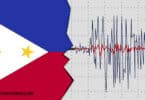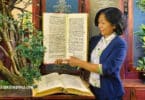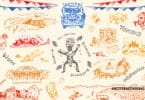The Philippines, known for its rich and diverse cultural tapestry, also holds a unique place in Jewish history. While the Jewish community in the Philippines has always been small, it has played a significant role in the country’s history, especially during times of global turmoil. For those interested in tracing Jewish ancestry within the Philippines, the journey is both intriguing and rewarding, offering insights into a little-known but deeply impactful chapter of history.
A Brief History of Jews in the Philippines
Jewish presence in the Philippines can be traced back to the Spanish colonial period, but it wasn’t until the 20th century that the community began to grow more significantly. The earliest Jewish settlers were Sephardic Jews who arrived during the Spanish Inquisition, fleeing persecution. However, their numbers were few, and their presence remained relatively obscure until the early 1900s.
The most notable wave of Jewish immigration occurred during the 1930s and 1940s, a time when the world was on the brink of war. As the horrors of the Holocaust began to unfold in Europe, a remarkable humanitarian effort led by then-President Manuel L. Quezon provided refuge to approximately 1,200 Jewish families fleeing Nazi persecution. This act of compassion has been etched into both Jewish and Filipino history, symbolizing the enduring bond between the two peoples.
These refugees, who settled primarily in Manila, brought with them their traditions, religious practices, and a deep sense of community. They established synagogues, schools, and social organizations, contributing to the vibrant cultural fabric of the Philippines. Today, their descendants continue to honor this legacy, making Jewish genealogy in the Philippines a fascinating area of study.
Key Resources for Tracing Jewish Ancestry in the Philippines
If you suspect that your family has Jewish roots in the Philippines, you can use several resources and strategies to trace your ancestry. These resources include community archives, immigration records, and personal histories, each offering a unique glimpse into the lives of Jewish Filipinos.
Jewish Community Archives:
Synagogues and Jewish Organizations: The Jewish Association of the Philippines and local synagogues in Manila, such as the Beth Yaacov Synagogue, may have archives that include membership records, marriage registers, and community histories. These records are invaluable for tracing Jewish ancestry within the country.
Holocaust Refugee Records: Some records of the Jewish refugees who came to the Philippines during World War II are preserved in various archives. The U.S. Holocaust Memorial Museum and Yad Vashem in Israel may have documents related to these refugees, including personal information, family backgrounds, and details about their journey to the Philippines.
Immigration and Naturalization Records:
The National Archives of the Philippines and the Bureau of Immigration may hold records of Jewish immigrants, particularly those who arrived in the early 20th century. These records can inform when and how Jewish families settled in the country.
Passenger Lists and Visa Records:
Records from shipping companies, consulates, and other entities involved in the immigration process may also hold clues about Jewish ancestors who arrived in the Philippines.
Cemetery Records:
Jewish cemeteries in the Philippines, such as the Jewish section of the Manila North Cemetery, contain gravestones with inscriptions that can offer clues about family history, including names, dates, and places of origin. These cemeteries are key locations for genealogical research.
Oral Histories and Family Records:
Given the tight-knit nature of the Jewish community in the Philippines, oral histories and family records play a significant role in preserving Jewish heritage. Connecting with the local Jewish community or organizations like the Jewish Association of the Philippines can help uncover these personal stories.
Challenges and Considerations in Jewish Genealogy
Researching Jewish ancestry in the Philippines presents its own challenges. The relatively small size of the Jewish community means that records may be limited, scattered, or not well-documented. Additionally, the impact of World War II and subsequent migrations have contributed to the fragmentation of records.
However, these challenges also present opportunities to delve into broader historical contexts and uncover connections that might not be immediately obvious. For example, understanding the global Jewish diaspora and the history of Jewish migration patterns can provide valuable insights when records are sparse.
Language and Cultural Barriers:
Many older records, particularly those created before or during the early 20th century, may be in languages such as Yiddish, Hebrew, or even Spanish. If you encounter records in these languages, consider enlisting the help of a translator or using online tools to decipher them.Connecting the Dots:
Sometimes, genealogical research requires piecing together information from various sources to create a coherent family history. This might involve cross-referencing cemetery records with immigration documents, or using oral histories to fill in gaps left by incomplete official records.Suggested Reading and Further Research
For those interested in diving deeper into the history of Jews in the Philippines and Jewish genealogy, here are some recommended books and resources:
“Escape to Manila: From Nazi Tyranny to Japanese Terror” by Frank Ephraim
This book provides a detailed account of the Jewish refugees who found sanctuary in the Philippines during World War II, offering personal stories and historical context.
“Manila Memories: The Story of the Rescue of 1,200 Jews in the Philippines” by Bonnie M. Harris
A comprehensive look at the efforts of the Filipino government to save Jewish lives during the Holocaust is filled with personal anecdotes and historical insights.
“Safe Haven: The Refugees in Manila” by Barbara Sasser
Another excellent resource that chronicles the experiences of Jewish refugees in Manila, exploring the challenges and triumphs of this unique community.
Online Resources:
JewishGen (www.jewishgen.org) is a comprehensive resource for Jewish genealogy. It offers databases, family trees, and tools to help you trace Jewish ancestry worldwide.
The Jewish Association of the Philippines (www.jewishphilippines.net) is the official website of the Jewish community in the Philippines. It provides information on community activities, history, and resources for those interested in Jewish genealogy.
Archives and Museums:
U.S. Holocaust Memorial Museum: Offers extensive archives and resources related to the Holocaust, including records of Jewish refugees who fled to the Philippines.
Yad Vashem (Israel): As the World Holocaust Remembrance Center, Yad Vashem holds invaluable records and offers tools for researching Jewish genealogy, particularly for those tracing ancestors affected by the Holocaust.
Preserving and Celebrating a Unique Heritage
Jewish genealogy in the Philippines may not be as widely recognized as in other regions, but it holds a special place in both Jewish and Filipino history. For those with Jewish roots connected to the Philippines, tracing this heritage is not just about uncovering family history; it’s about honoring a legacy of survival, resilience, and cultural exchange.
By using the resources and strategies outlined in this article, you can embark on a meaningful journey to discover your Jewish ancestry in the Philippines. Whether your family’s story is tied to the Sephardic Jews of the Spanish period, the refugees of World War II, or other Jewish immigrants, each discovery adds to both Jewish and Filipino history’s rich history.
As you continue your research, remember that genealogy is not just about finding names and dates; it’s about connecting with the past to inform and enrich the present. Your family’s story is part of a larger narrative that spans continents and centuries, and each piece of the puzzle you uncover brings you closer to understanding your unique place in that story.






